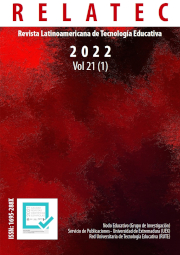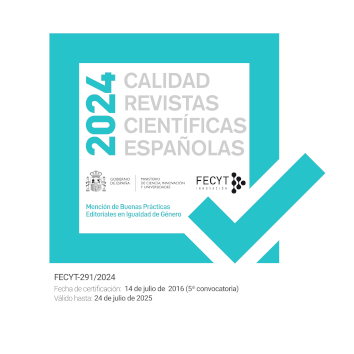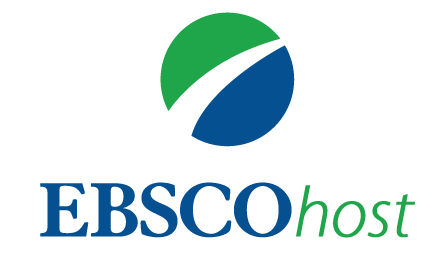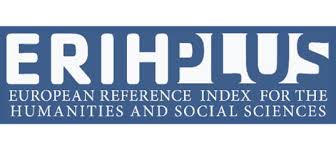Factors that enhance the participation and communication of higher education students in distance learning
DOI:
https://doi.org/10.17398/1695-288X.21.1.27Keywords:
Distance Education, Higher Education, Videoconferencing, Virtual Classrooms, Web Based InstructionAbstract
The increase in the offer of distance learning higher education courses is a growing reality that requires a careful look at how communication takes place between those involved. Thus, the objective of this article is to investigate the factors that in distance education enhance the participation of undergraduate students in synchronous and asynchronous communications, based on the assumptions of the theories of learning by Lev Vygotsky and Paulo Freire. Therefore, as specific objectives, the profile of students was also drawn in relation to the investigated sample, as well as a diagnosis made in undergraduate courses at a Brazilian State University about the current conception of students about the types of communication that occur during his academic training. background, revealing the frequency of use of communication tools and the frequency of interaction and level of influence between the actors involved.With the structuring and analysis of the data carried out, the following factors were identified as factors that enhance participation: expansion of synchronous interaction with the professor who authored the course; the need for a quicker return to messages that are posted on the forums; improving the administrative / didactic-pedagogical organization of the dissemination of lives; change in the schedule of lives or better sizing of schedules; and lives with exercise resolutions and on-call doubts. In addition to providing students with a more active participation in this communication process in the context of distance education, considering that the teaching and learning process occur in a mediated, collaborative way and through social interactions in the midst of the knowledge society.
Downloads
References
Aguiar, W. M. J. (2000). Reflexões a partir da psicologia sócio-histórica sobre a categoria "consciência". Cadernos de Pesquisa, n. 110, p. 125-142, Jul.
Branco, L. S. A., Conte, E., & Habowski, A. C. (2020). Evasão na educação a distância: pontos e contrapontos à problemática. Avaliação: Revista da Avaliação da Educação Superior (Campinas) [online], v. 25, n. 01.
Brasil. (2017) Decreto nº 9.057, de 25 de maio de 2017. Regulamenta o art. 80 da Lei nº 9.394, de 20 de dezembro de 1996, que estabelece as diretrizes e bases da educação nacional. [S. l.]. Disponível em: http://www.planalto.gov.br/ccivil_03/_Ato2015-2018/2017/Decreto/D9057.htm#art24. Acesso em: 12 jul. 2020.
Brasil. (2007). Referenciais de Qualidade para Educação Superior a Distância Ministério da Educação/Secretaria de Educação a Distância. Disponível em: http://portal.mec.gov.br/seed/arquivos/pdf/legislacao/refead1.pdf. Acesso em 09/09/2020.
Brito, J. A. (2010). Engajamento em atividades assíncronas na modalidade de ensino a distância: requisitos de interfaces colaborativas. 2010. 126 f. Dissertação. Universidade Federal de Pernambuco, Pernambuco, Recife.
Creswell, J. W. (2007). Projeto de Pesquisa: métodos qualitativo, quantitativo e misto. Porto Alegre: Art. Med..
Dotta, S., & Giordan, M. (2014). Estratégias para Condução do Diálogo a Distância. Revista Brasileira de Informática na Educação, [S.l.], v. 22, n. 02, p. 77, ago.
Freire, P. (1996). Pedagogia da autonomia: saberes necessários à prática educativa. São Paulo: Paz e Terra.
Freire, P. (2015). Pedagogia do oprimido. 59. ed. São Paulo: Paz e Terra.
Garbin, M. C. (2011). Uma análise da produção audiovisual colaborativa: uma experiência inovadora em uma escola de ensino fundamental. In: ETD – Educação Temática Digital, Campinas, SP, v. 12, n. esp., p. 227-251, mar. Disponível em: <http://www.fae.unicamp.br/revista/index.php/etd/article/view/2274/pdf_59>. Acesso em: 7 abr. 2011.
Gil, A. C. (2010). Métodos e técnicas de pesquisa social. São Paulo: Editora Atlas.
Hatakeyama, V. V., & Gomes, Á. C. (2019). O papel do tutor na aprendizagem. Humanidades & Inovação, v. 6, p. 396-403.
Instituto Nacional de Estudos e Pesquisas Educacionais Anísio Teixeira (2017). Resumo técnico do Censo da Educação Superior 2017 [recurso eletrônico]. – Brasília : Inep, 2019. Disponível em: <http://download.inep.gov.br/educacao_superior/censo_superior/resumo_tecnico/resumo_tecnico_censo_da_educacao_superior_2017.pdf>. Acesso em 12 jul. 2020.
Leontiev, A. (1978). O desenvolvimento do psiquismo. Lisboa: Livro Horizonte.
Lévy, P. (1999). Cibercultura. São Paulo: Editora 34.
Luvizotto, C. K., & Carniel, F. (2014). A educação a distância na sociedade da informação e o processo de comunicação na sala de aula virtual. 1. ed. São Paulo: Cultura Acadêmica.
McFarland, C. (2012). Experiment!: Website conversion rate optimization with A/B and multivariate testing. [S.l.]: New Riders.
Marques, L. P., & Marques, C. A. (2006). Dialogando com Paulo Freire e Vygotsky sobre educação. In: 29ª Reunião Anual da Anped (Associação Nacional de Pós-Graduação e Pesquisa em Educação). Caxambu/MG.
Moore, M. G. (2002). Teoria da Distância Transacional. Revista Brasileira de Aprendizagem Aberta e a Distância, São Paulo.
Moore, M., & Kearsley, G. (2007). Educação a Distância: uma visão integrada. São Paulo, Thomson Learning.
Oliveira, M. K. (1993). Vygotsky. Aprendizado e Desenvolvimento. Um processo sócio-histórico. São Paulo: Scipione.
Porto, C.; Oliveira, K. E., & Chagas, A. (2017). Whatsapp e educação: entre mensagens, imagens e sons [online]. Salvador: Ilhéus: EDUFBA; EDITUS.
Rocha, S. S. D., Joye, C. R., & Moreira, M. M. (2020). A Educação a Distância na era digital: tipologia, variações, uso e possibilidades da educação online. Research, Society and Development, 9(6), e10963390.
São Paulo (2012) Lei 14.836, de 20 de julho de 2012. Institui a Fundação Universidade Virtual do Estado de São Paulo - UNIVESP, e dá providências correlatas. São Paulo: Diário Oficial do Estado de São Paulo, 21 jul. Disponível em: <http://www.al.sp.gov.br/repositorio/legislacao/lei/2012/lei-14836-20.07.2012.html>. Acesso em: 10 out. 2020.
Silva, M. (2000). Sala de Aula Interativa. Rio de Janeiro: Quartet.
Silva, L., Santos, D., & Alves, H. (2020). Silêncio, evasão e desistência na educação a distância: uma experiência docente no schoology. Anais do CIET:EnPED: 2020 - (Congresso Internacional De Educação E Tecnologias | Encontro De Pesquisadores Em Educação A Distância).
Teles, L. (2009). Aprendizagem em e-learning: o papel do professor online é de facilitador ou de co-gerador de conhecimentos?. In: Litto, F.; Formiga, M.. (Org.). Educação a Distância: o Estado da Arte. São Paulo: Editora Pearson.
Universidade Virtual do Estado de São Paulo (UNIVESP). Plano de Desenvolvimento Institucional (2018 - 2022). São Paulo: Univesp, 2018. Disponível em: <https://univesp.br/sites/58f6506869226e9479d38201/assets/5d5d93c27c1bd15a5a1803cd/PDI_UNIVESP_2018_2022.pdf>. Acesso em: 10 out. 2020.
Vygotsky, L. S. (2010). Psicologia pedagógica. Tradução Paulo Bezerra. 3. ed. São Paulo: WMF Martins Fontes.
Yin, R. K. (2001). Estudo de caso: planejamento e métodos. 2ª ed. Porto Alegre: Bookman, 2001.
Valente, J. A. (2005). A espiral da espiral de aprendizagem: o processo de compreensão do papel das tecnologias de informação e comunicação na educação. 2005. 238 f. Tese (Livre Docência). Instituto de Artes, Universidade Estadual de Campinas, São Paulo, Campinas.
Downloads
Published
Issue
Section
License
Authors who publish in this journal accept the following conditions:
1. The Author retains copyright in the article. Upon acceptance of the article, the author shall grant to the Publisher the right of first publication of the article. with the dcoument registered with the Creative Commons Attribution-NonCommercial-NoDerivative 4.0 International (CC BY-NC-ND) license, which allows to third parties to use what is published whenever they mention the authorship of the work and the first publication in this journal.
2. Authors can make other independent and additional contractual agreements for the non-exclusive distribution of the article published in this journal (eg, include it in an institutional repository or publish it in a book) provided they clearly indicate that the work was published for the first time in this journal.
3. Authors are allowed and recommended to publish their work on the Internet (for example on institutional or personal pages) before and during the review and publication process, as it can lead to productive exchanges and a greater and faster diffusion of published work (see The Effect of Open Access).









